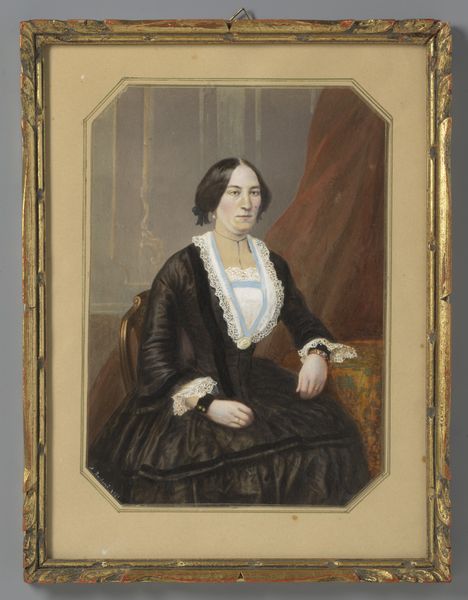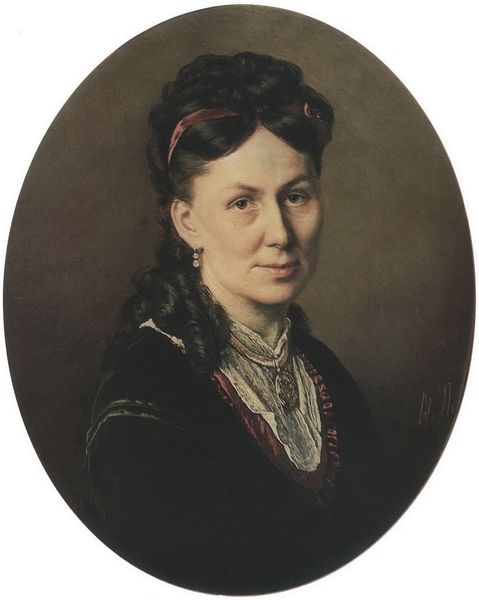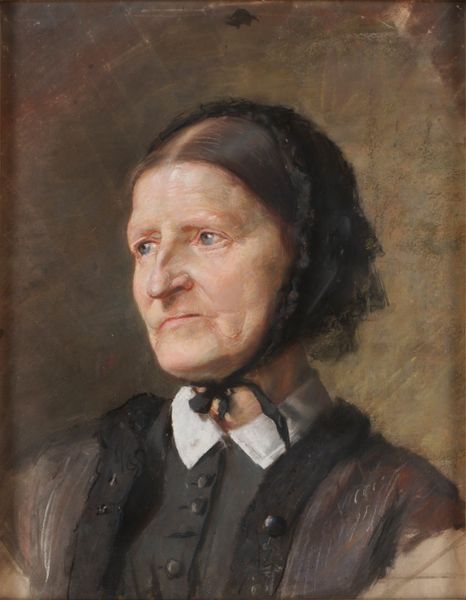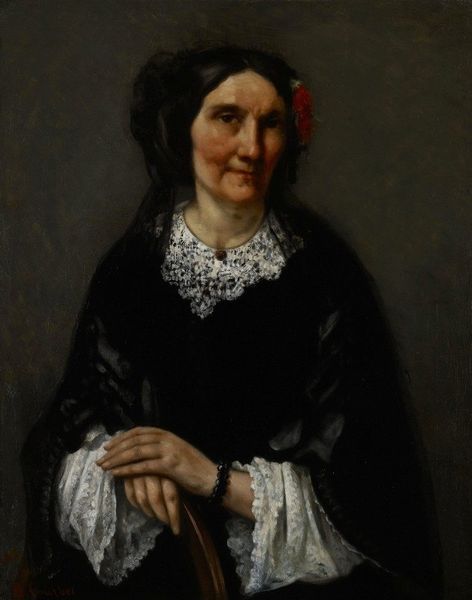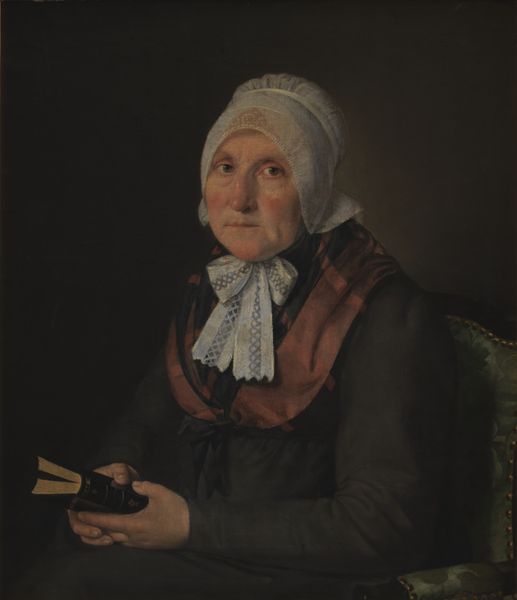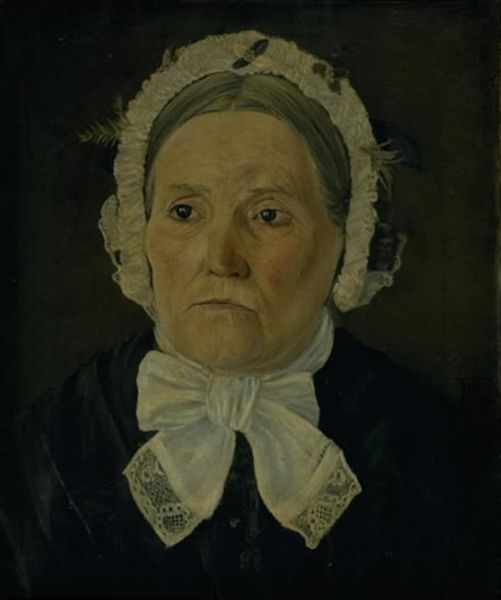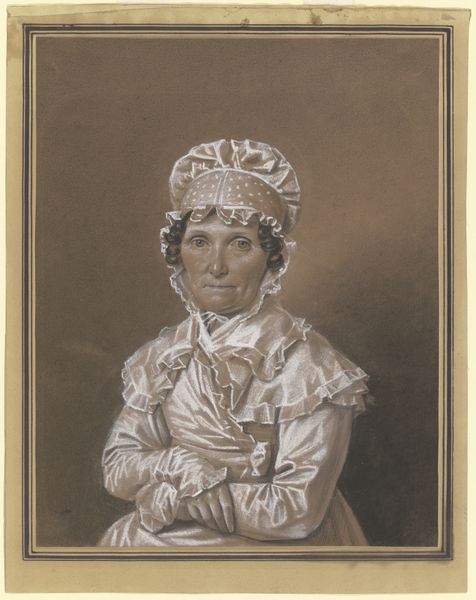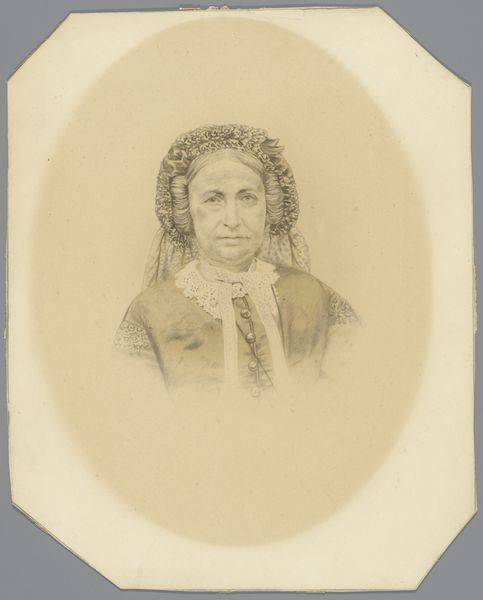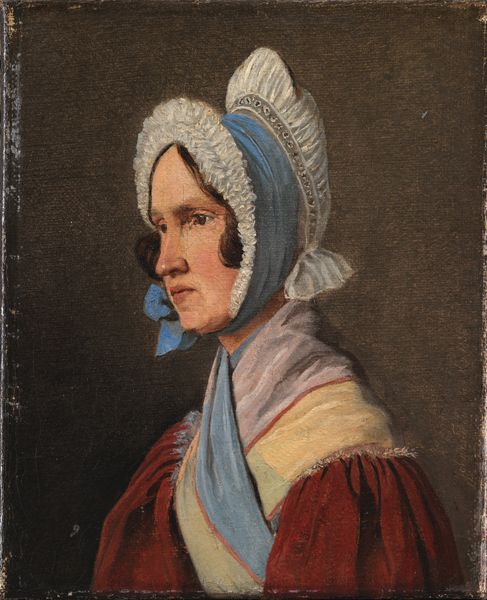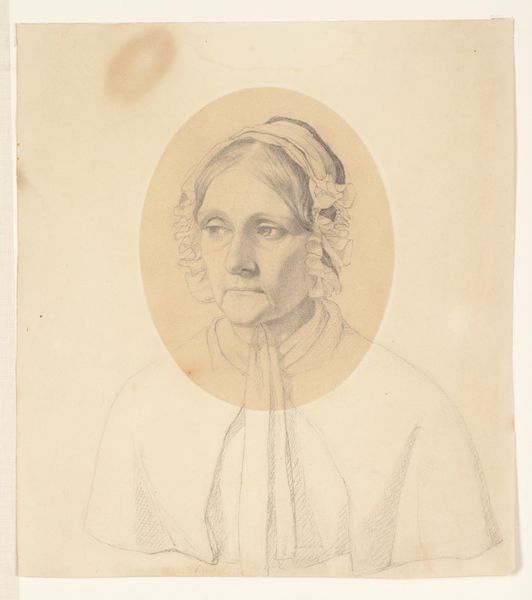
Portrait of a Woman, Called Héloïse Abélard 1850 - 1899
0:00
0:00
Dimensions: 25 3/8 x 21 1/8 in. (64.5 x 53.7 cm)
Copyright: Public Domain
Editor: This is Gustave Courbet's "Portrait of a Woman, Called Héloïse Abélard," likely painted sometime in the latter half of the 19th century. It's an oil painting, currently residing here at the Met. There's a certain somberness to it, yet a subtle warmth in the woman's expression. What strikes you most about this piece? Curator: Immediately, I'm drawn to the visible brushstrokes, the very act of applying paint to canvas. Consider the material conditions: Courbet's access to pigments, the quality of the oil, the weave of the canvas itself. How does the deliberate visibility of these materials challenge the conventional illusionism that preceded realism? Editor: That’s interesting, I hadn’t thought of it that way. Curator: Look closer at the textures he creates – the way the light catches the rough surface of the impasto. Courbet wasn’t simply depicting a woman; he was actively constructing a material reality. The historical context is vital, too. How did the rise of industrial capitalism and mass production impact the perception and valuation of handcrafted objects and artwork like this one? Editor: So, the act of *making* becomes more significant than just the subject matter. How would that influence the art world? Curator: Precisely! It shifts the focus to labor and process. He's showing us the materiality, but he also implies all the work needed to produce and, I daresay, buy the painting. Consider the implications on the artist's role within society itself and what that reveals about changing cultural values during that period! Editor: This makes me reconsider portraiture entirely. Curator: Exactly, how the materials literally shape our viewing of art? Editor: Thanks! This way of considering art—emphasizing labor and resources, while asking pertinent questions about a canvas—expands the realm of how artworks signify.
Comments
No comments
Be the first to comment and join the conversation on the ultimate creative platform.
